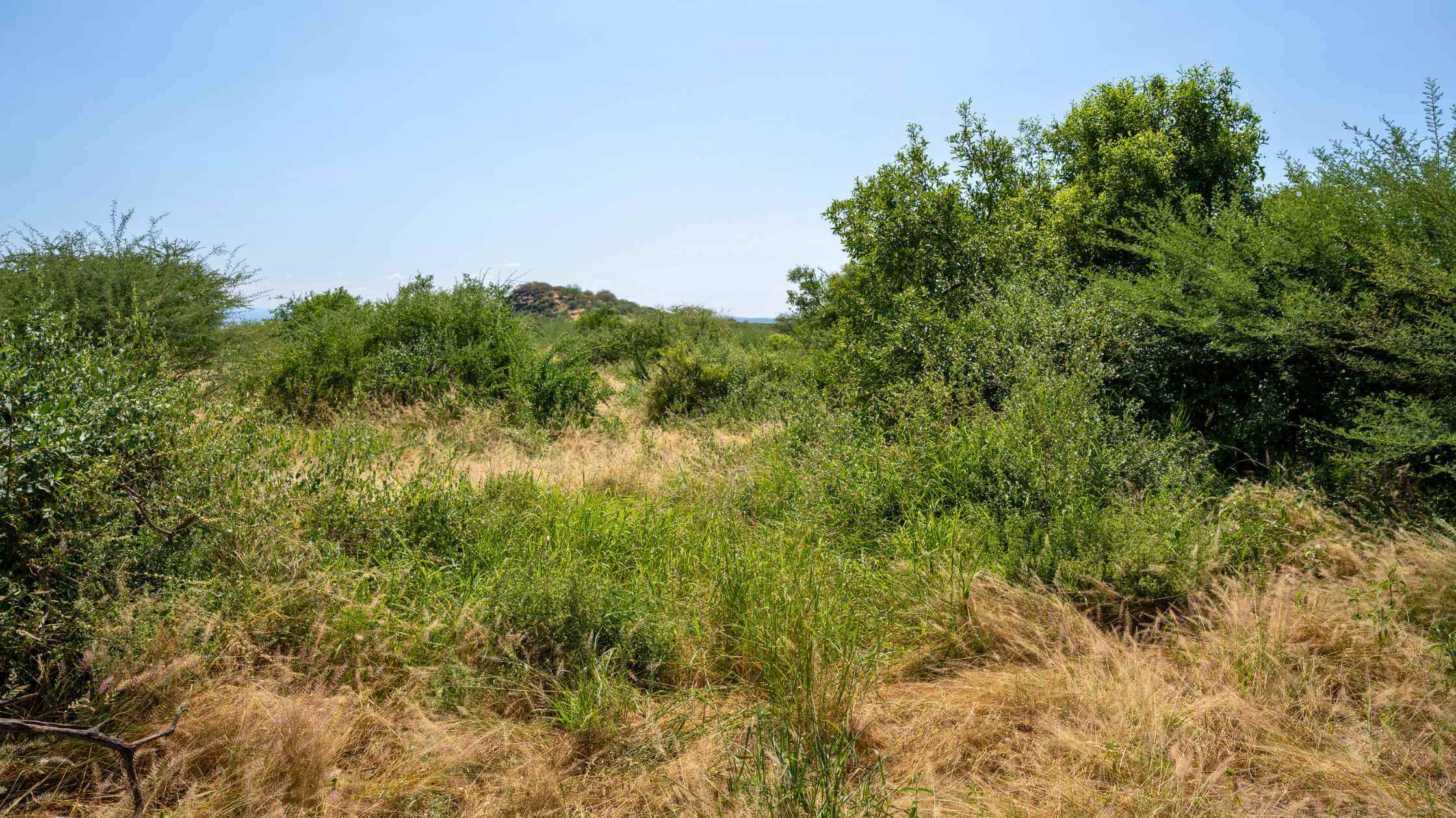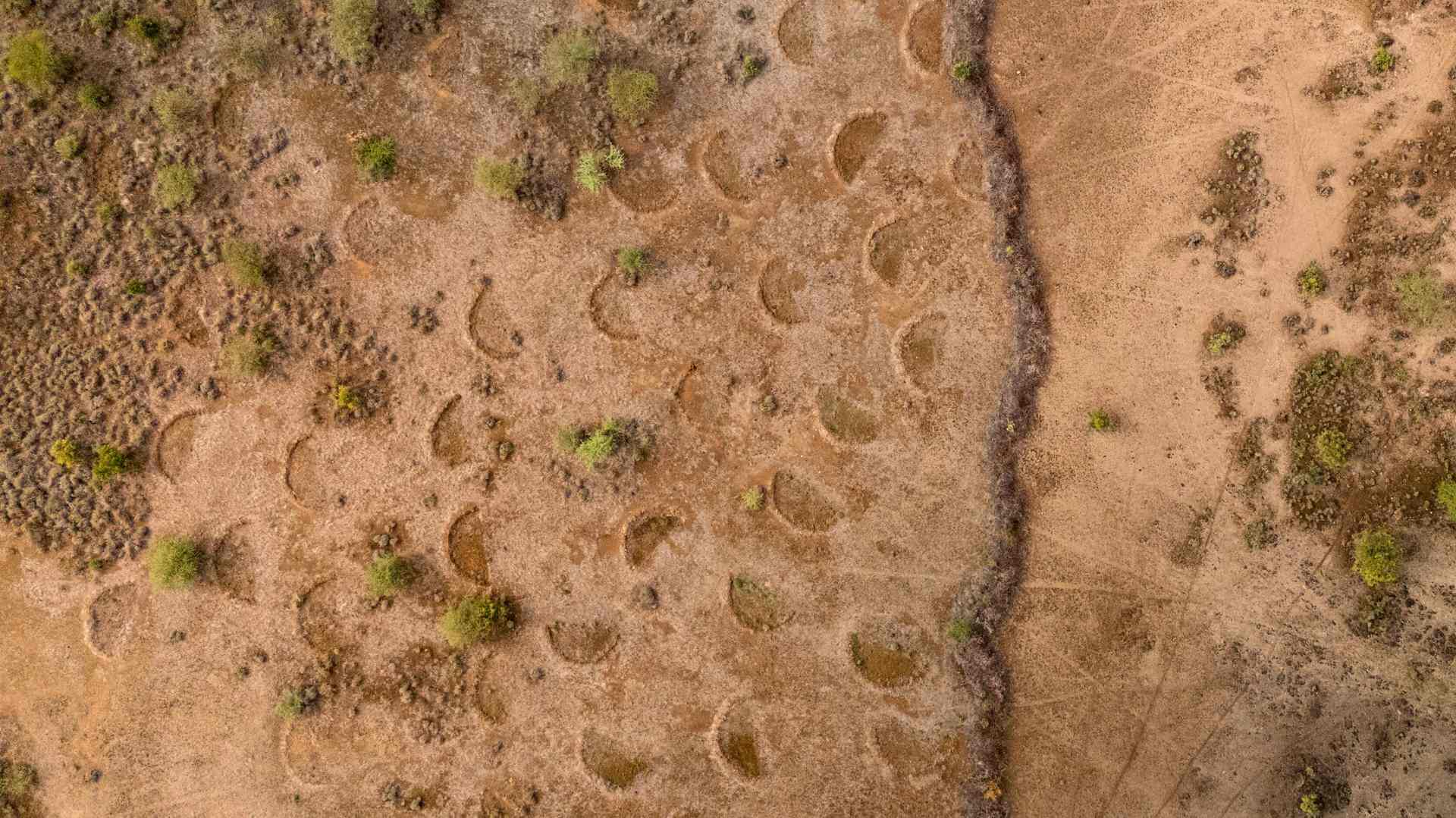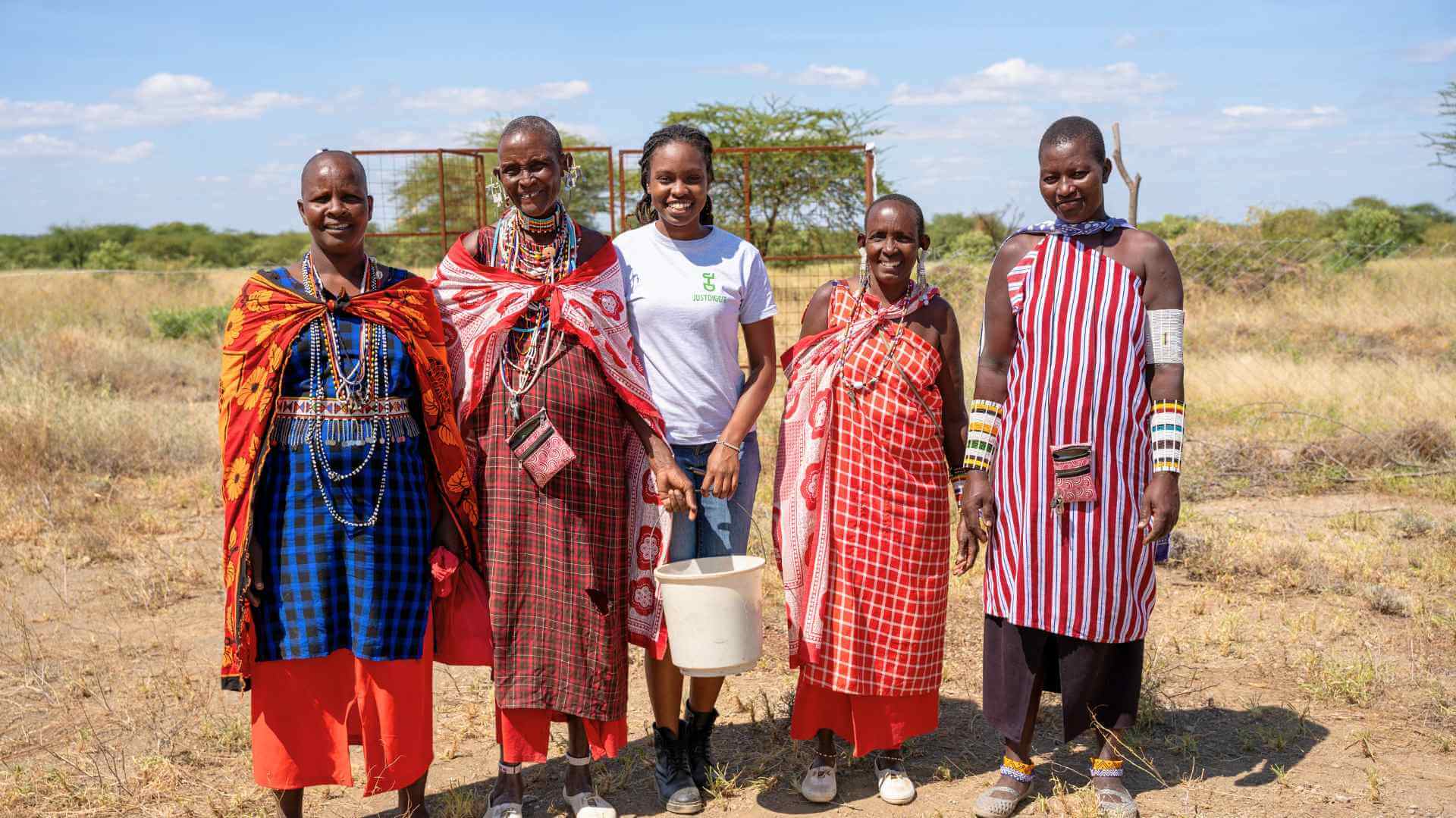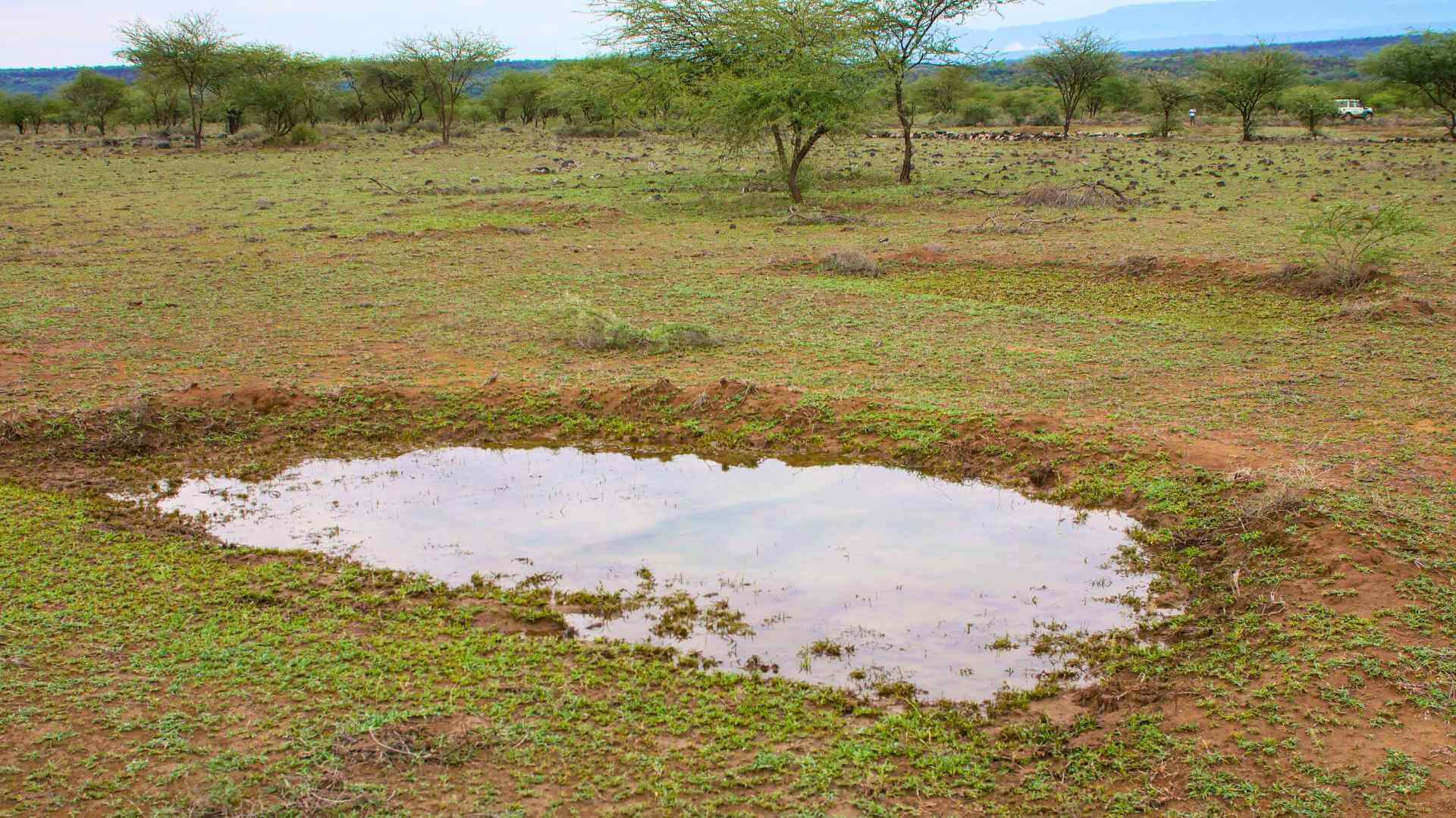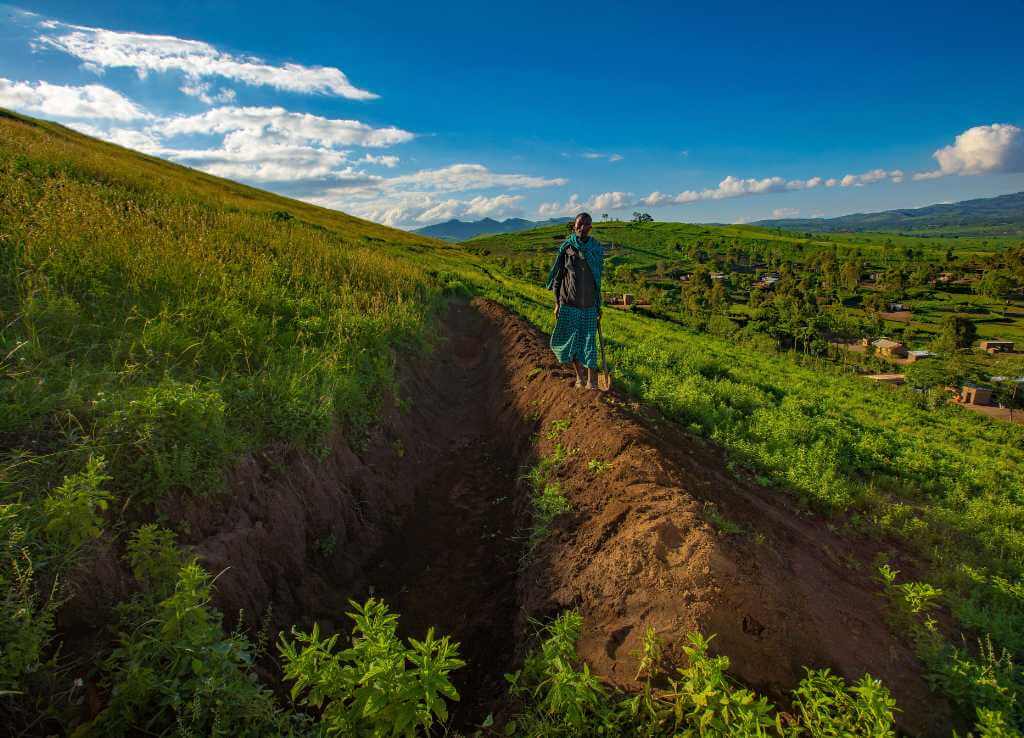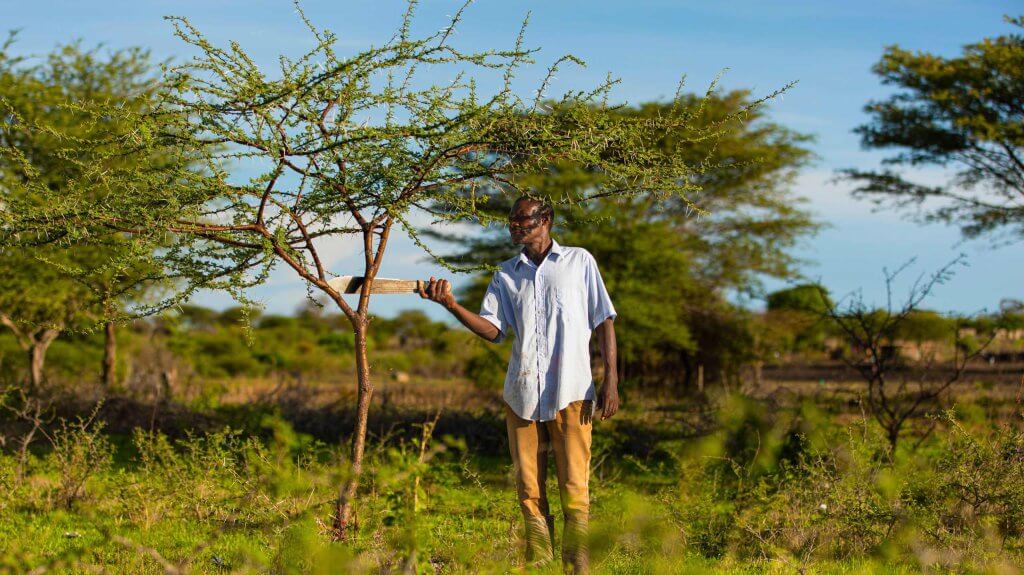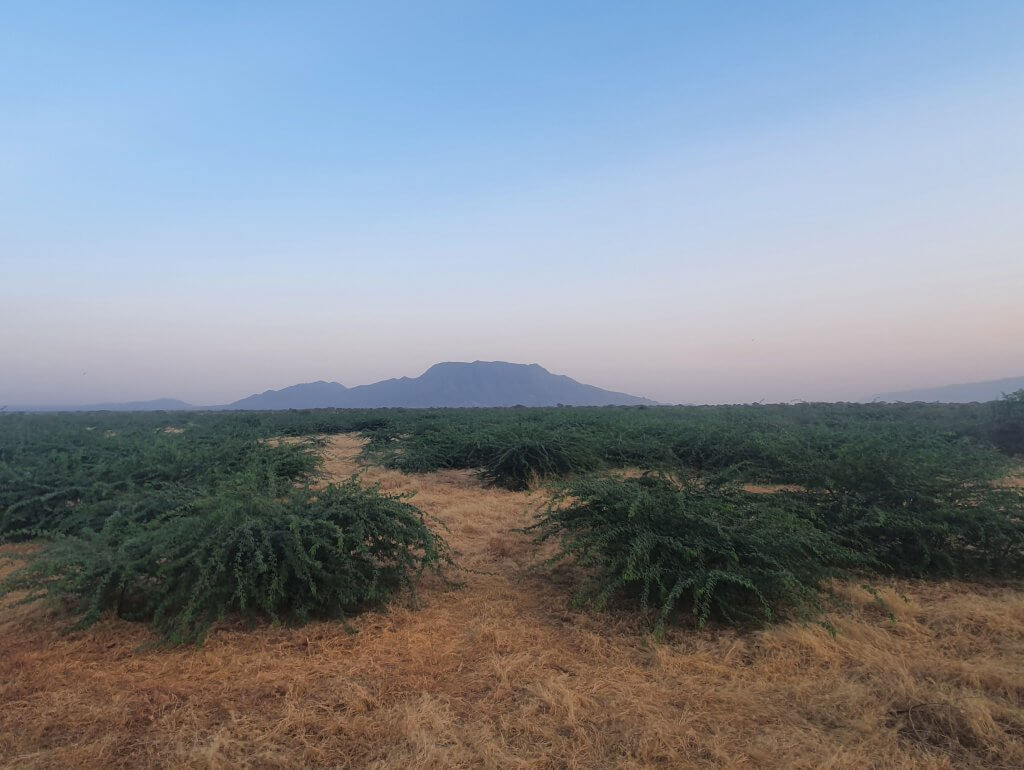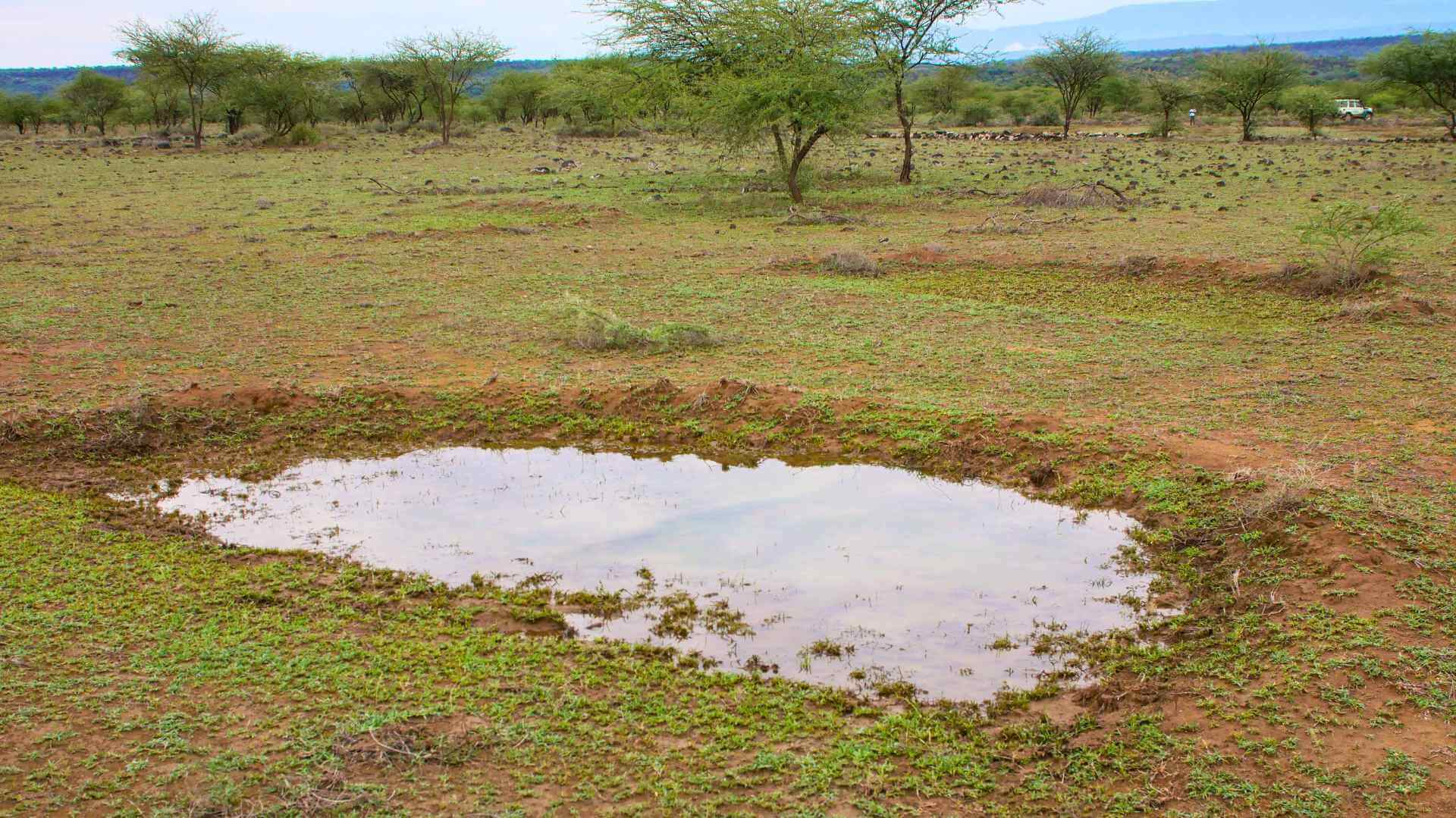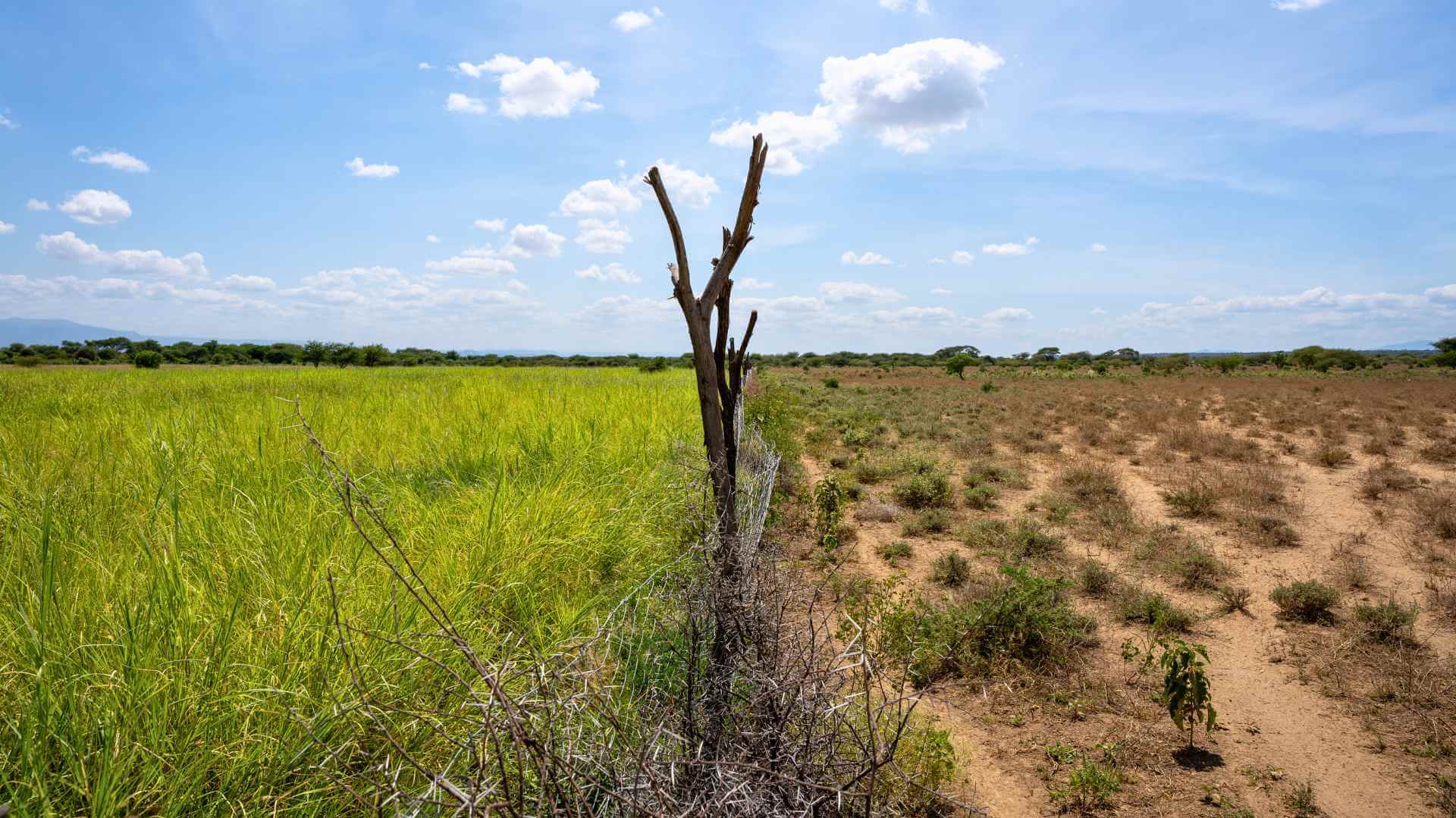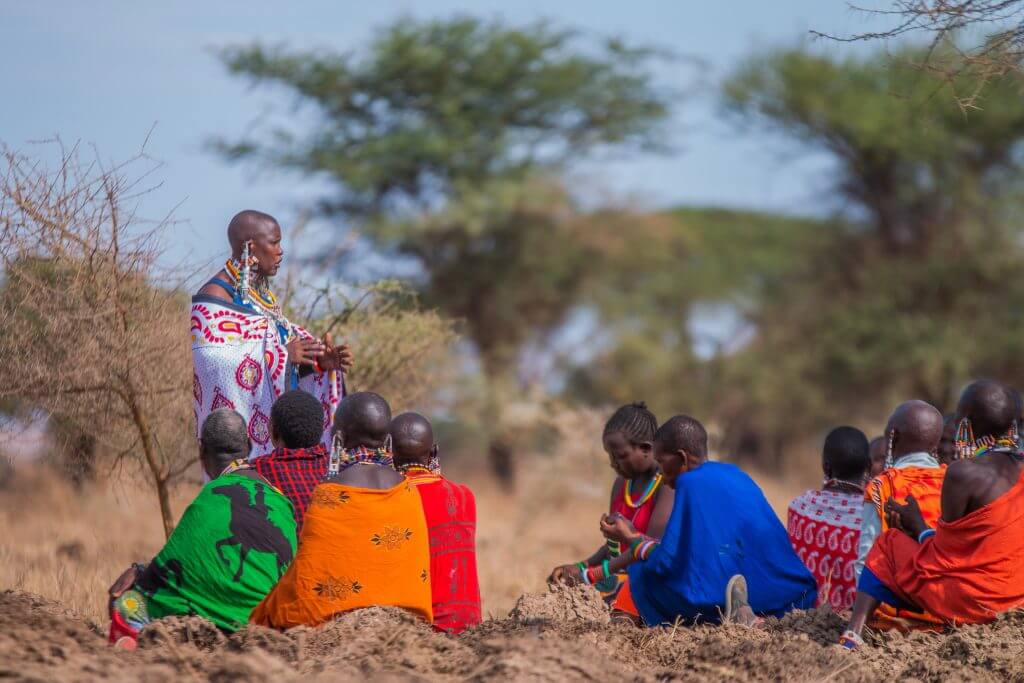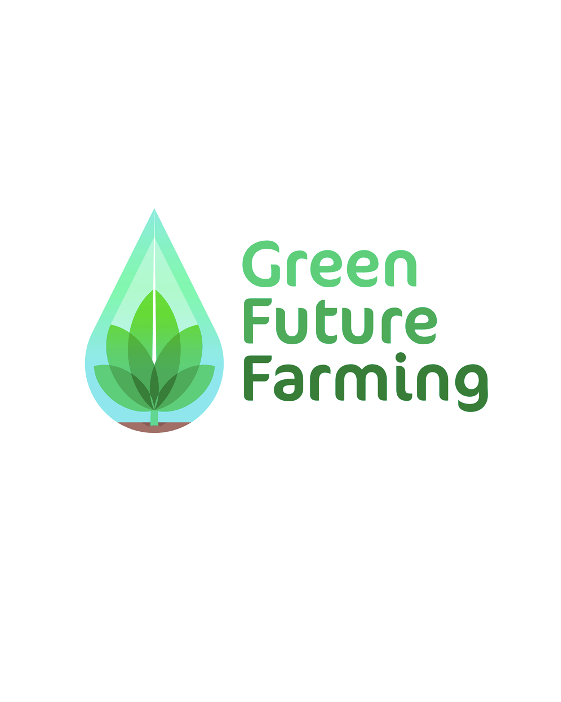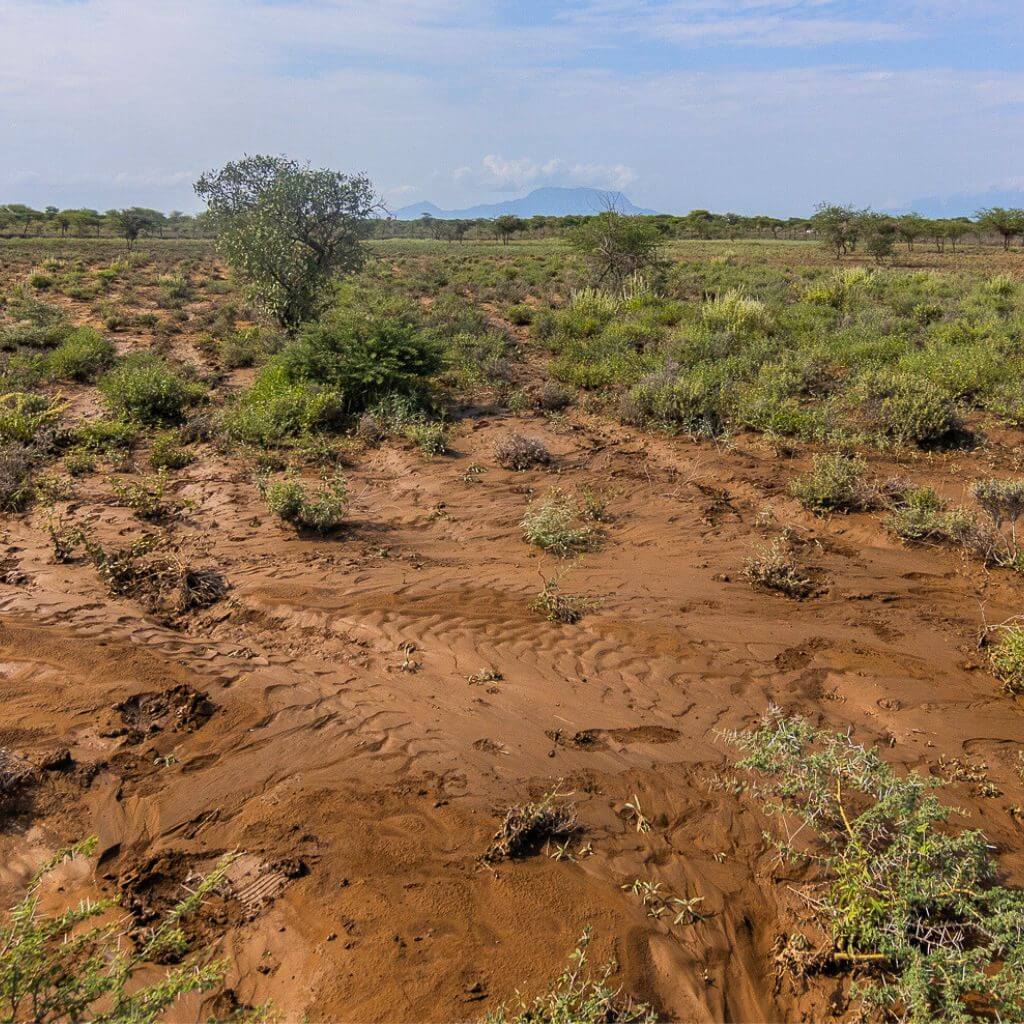
Almost 500k trees in 6 years: our very first Treecovery project in Kenya has just started!
Restoring degraded rangelands and promoting sustainable land-use practices
Together with the South Rift Association of Land Owners (SORALO) and One Tree Planted (OTP) we are restoring degraded rangelands in the South Rift Region and encouraging the communities to implement sustainable land use practices. By bringing back vegetation and protecting the rangelands we can improve the livelihoods of the Maasai communities and support the wildlife living in the area.
The South Rift Region is part of the South Rift Valley, located close to the border of Tanzania. The area is adjacent to two large wildlife reserves – the Serengeti-Mara and the Great Kilimanjaro-Amboseli-Tsavo – and supports some of the richest mammal diversity in the world. It’s home to Maasai pastoralists: a nomadic community whose main source of income and survival is livestock keeping. Due to persistent droughts, overgrazing, and an increase in harmful invasive plant species, grazing areas and water resources for their livestock are declining. Meanwhile, wildlife in the region is also struggling to sustain itself.
Together with partner SORALO and One Tree Planted we are implementing different landscape restoration techniques to bring back sustainable vegetation in the area and remove invasive species. By promoting sustainable land-use practices among the communities, we aim to improve the quality of their rangelands. This will lead to more food and water security, more fodder for their livestock, and more income for the communities living in the area. Moreover, it will lead to a better habitat for the animals living in the region. On a larger scale, regreening degraded land has a cooling effect on the (local) climate.
hectares are being restored
water bunds dug
grass seed banks
liters water retained in 2024
Fanya Juu & Fanya Chini
Restoring degraded rangelands leads to more food and water availability, more fodder for livestock, and more income for the Maasai communities living in the area.
Embirika Valley in South Rift, 2024
Bunds (or as we like to call them: “earth smiles”) are semi-circular shaped pits that capture rainwater.
They are dug in our project areas in order to capture rainwater that will otherwise get washed away over the dry, barren soil. By digging bunds, we can regreen a large area in a very short amount of time, benefiting biodiversity, nature, people and – eventually our climate.
Shompole in South Rift, 2025
Within our grass seed banks, Maasai women grow, harvest, and sell grass (hay) and seeds. They make an income by selling them on local markets or to organizations. The grass seed banks form an oasis of green in the barren surroundings, and the hay the women harvest is food for their livestock in dry seasons.
Selling the grasses and the grass seeds harvested from the grass seed banks generates a source of income for the women who are managing the grass seed banks. This income serves as an alternative livelihood, making the women more independent.
In total 80 women are involved in the South Rift grass seed banks.
One of the main advantages bringing back vegetation is that it creates more moisture into the air. Vegetation “transpires”: it releases moisture into the air which cools it down. On a large enough scale, this helps to create clouds and increases the chance of rain, especially at the beginning and end of the rainy season, helping to restore the water cycle.
Fanya Juu and Fanya Chini are rainwater harvesting techniques. Farmers dig trenches along the contours within their farmland to prevent erosion and to capture the valuable rainwater within their land.
In total more than 8 kilometers of these contours have been dug by the farmers in the South Rift.
By implementing a diverse range of landscape restoration techniques we bring back sustainable vegetation on the rangelands. The proposed techniques are:
Farmer Managed Natural Regeneration (FMNR) or Kisiki Hai (‘living stump’ in Swahili), is a technique to regrow trees and support new, naturally occurring sprouts to grow big.
Together with One Tree Planted, we train local farmers to apply the technique on their own land, allowing the regeneration of millions of trees.
One of the main problems in the South Rift Region are invasive plant species, which lead to decline of healthy rangelands.
Such invasive species found in the project area are Prosopis and Ipomoea. Prosopis is a tree or shrub that grows extremely well in dry and degraded areas. The Ipomoea is an annual herb that grows well in semi-arid areas. Despite the fact that both species are vegetation, it is actually harmful to the health of the rangelands. As the species grow well on the degraded rangelands, not palatable to livestock and absorb a lot of water from the soil, it outcompetes the vegetation that should be present: sustainable grass and shrubs that can be eaten by livestock and wildlife. The local communities see the species as a big threat for the health of their rangelands. That’s why within the project areas we will remove the Prosopis and Ipomoea plants, making room for other, sustainable vegetation.
Not only on the rangelands of the South Rift Valley Prosopis and Ipomoea are a big problem, also in many other landscapes across Kenya these invasive species are taking over the healthy vegetation.
The implemented techniques will help to prevent erosion of fertile soil and restore the water balance in the soil.
We will also harvest water as a grazing management solution. By making more water available outside the protected grazing areas, livestock can be kept out of the vulnerable areas for a longer period, leaving more time for the vegetation to recover.
Grass seed banks are small parts of communal land that are used for the production of grasses and grass seeds.
The grass seed banks are managed and maintained by Maasai women groups. Once the grasses are fully grown, the grasses produce grass seeds which are sold by the women on local markets or to other regreening projects. This means more income for the women and more green in other areas, a win-win situation!
To ensure the sustainability of the projects, we will develop a pasture grazing management plan together with our local partner and the communities.
The goal is to prevent overgrazing in critical and vulnerable grazing areas.
To maximize our impact on landscape restoration, we promote the implementation of different types of sustainable land use practices among the communities, including grazing management, managing invasive species and erosion control measures.
We do this by giving training, organizing community meetings and using different communication tools focused on knowledge sharing and inspiration. By activating community members to trial and use sustainable land use practices, we are able to keep the landscapes in the area green and healthy.
The project in the South Rift Valley is part of the Green Future Farming (GFF) program, an initiative from RAIN, MetaMeta and Justdiggit. Green Future Farming is a four-year project (2019-2023) aimed at showing how in three completely different landscapes, in three different countries (Uganda, Ethiopia and Kenya), regenerative agriculture can benefit both farmers and the environment. By combining investment in landscape restoration and management, mainstreaming regenerative agriculture, and strengthening local value chains, the project aims to make rural economies more dynamic.
What makes the GFF program special is the fact that each organization not only runs their own local program, but also supports the other programs with their own expertise. The ultimate goal of the programs is to create a green future for many, particularly for women and young people, in different parts of East Africa. The program is supported by IKEA Foundation.
To truly understand how nature-based solutions transform entire landscapes, ecosystems and communities, you have to see it with your own eyes.
And that’s where we run into a problem: we can’t transport the entire world to our project areas. With this interactive experience, we found a solution. We decided to bring our regreening projects directly to you. Virtually, wherever you are. Come on in and experience the Water bunds, Treecovery site and the Grass seed bank!
